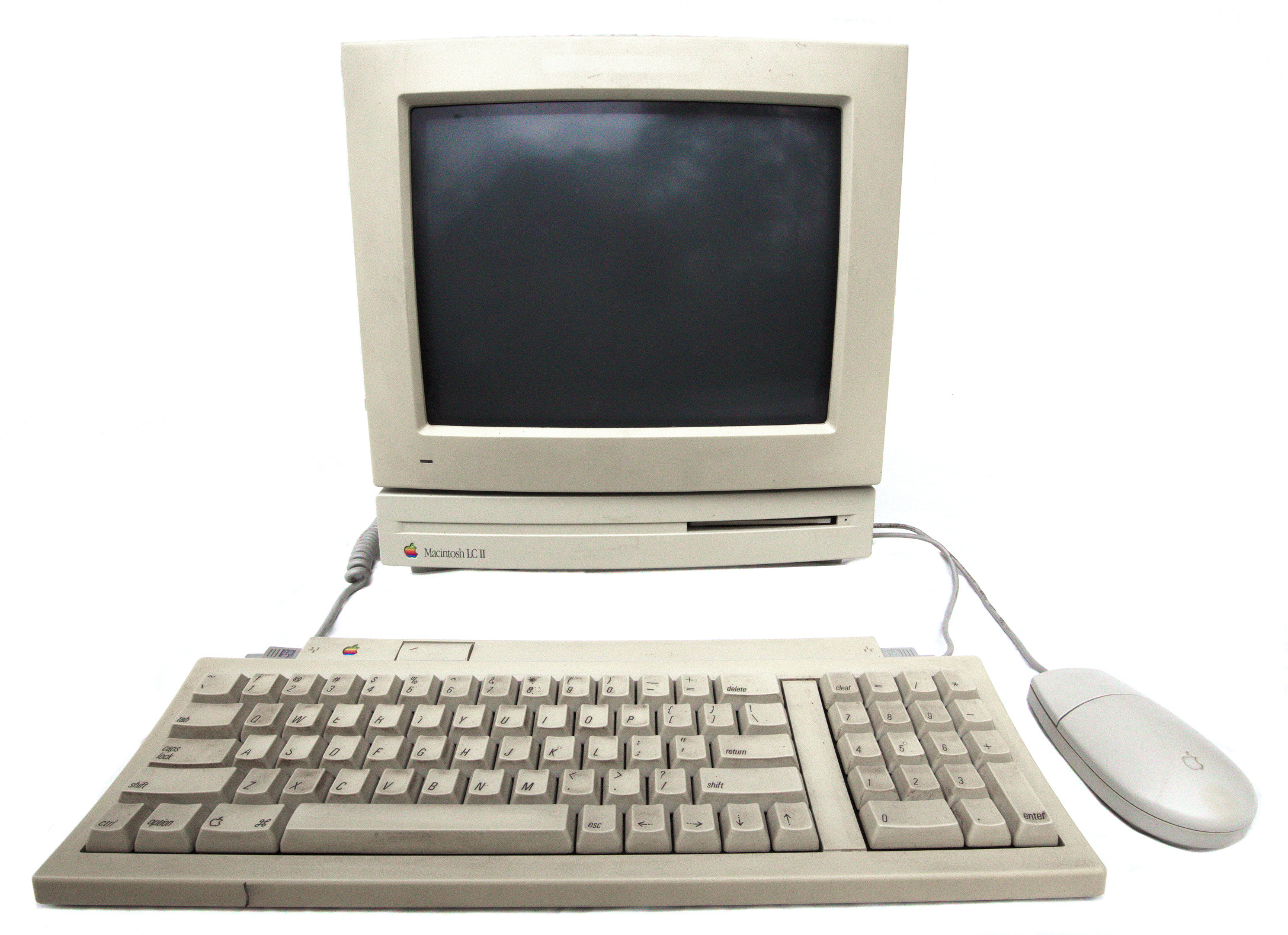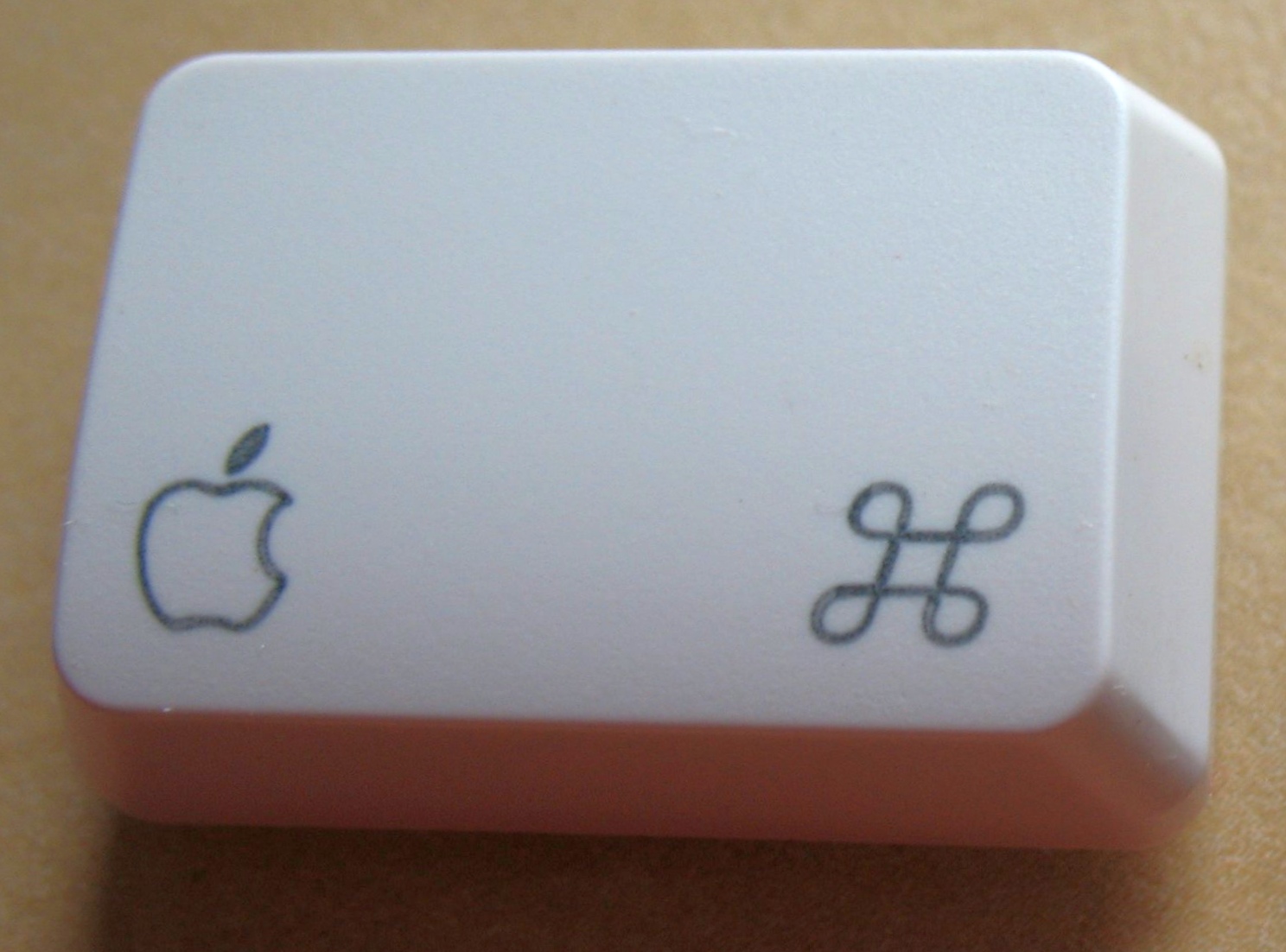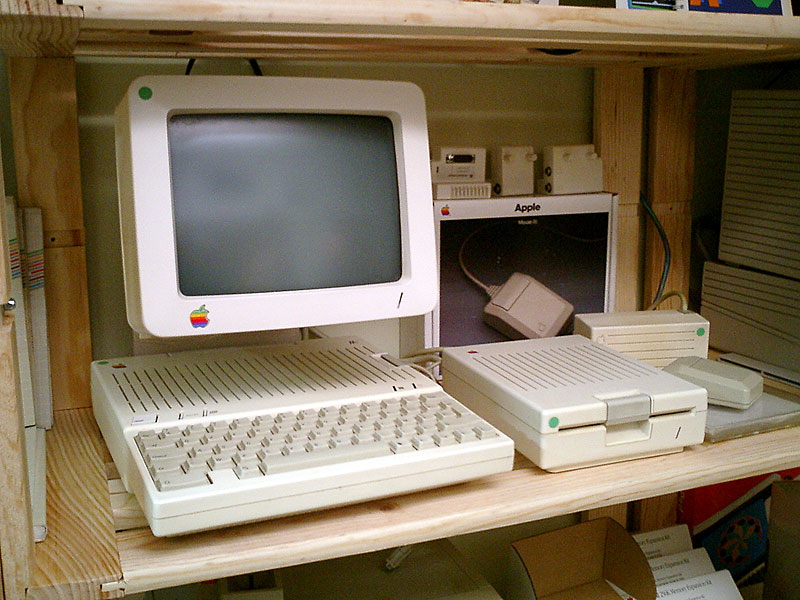|
Macintosh LC Family
The Macintosh LC is a family of personal computers designed, manufactured and sold by Apple Computer, Inc. from 1990 to 1997. Introduced alongside the Macintosh IIsi and Macintosh Classic as part of a new wave of lower-priced Macintosh computers, the LC offered the same overall performance as the Macintosh II for half the price. Part of Apple's goal was to produce a machine that could be sold to school boards for the same price as an Apple IIGS, a machine that was very successful in the education market. Not long after the Apple IIe Card was introduced for the LC, Apple officially announced the retirement of the IIGS, as the company wanted to focus its sales and marketing efforts on the LC. The original Macintosh LC was introduced on October 1990, with updates in the form of the LC II and LC III in 1992 and early 1993. These early models all shared the same pizza box form factor, and were joined by the Macintosh LC 500 series of all-in-one desktop machines in mid-1993. ... [...More Info...] [...Related Items...] OR: [Wikipedia] [Google] [Baidu] |
Claris
Claris International Inc., formerly FileMaker Inc., is a computer software development company formed as a subsidiary company of Apple Computer (now Apple Inc.) in 1987. It was given the source code and copyrights to several programs that were owned by Apple, notably MacWrite and MacPaint, in order to separate Apple's application software activities from its hardware and operating systems activities. In 1998, the company divested itself of all but its flagship product, and reformed as FileMaker Inc. In 2019, FileMaker Inc. announced at DevCon that it was restoring the Claris brand name. Also in 2019, Claris acquired Italian startup, Stamplay, a cloud-based integration platform which connects web services like Dropbox and Slack without writing code, and announced they would rename their product offering as Claris Connect. The company develops, supports and markets the relational database program FileMaker. The FileMaker Platform is available for the macOS, Microsoft Windows ... [...More Info...] [...Related Items...] OR: [Wikipedia] [Google] [Baidu] |
System 7
System 7, codenamed "Big Bang", and also known as Mac OS 7, is a graphical user interface-based operating system for Macintosh computers and is part of the classic Mac OS series of operating systems. It was introduced on May 13, 1991, by Apple Computer It succeeded System 6, and was the main Macintosh operating system until it was succeeded by Mac OS 8 in 1997. Current for more than six years, System 7 was the longest-lived major version series of the classic Macintosh operating system (to date, only Mac OS X had a longer lifespan). Features added with the System 7 release included virtual memory, personal file sharing, QuickTime, QuickDraw 3D, and an improved user interface. With the release of version 7.6 in 1997, Apple officially renamed the operating system "Mac OS", a name that had first appeared on System 7.5.1's boot screen. System 7 was developed for Macs that used the Motorola 680x0 line of processors, but was ported to the PowerPC after Apple adopted the new processor ... [...More Info...] [...Related Items...] OR: [Wikipedia] [Google] [Baidu] |
68030
The Motorola 68030 ("''sixty-eight-oh-thirty''") is a 32-bit microprocessor in the Motorola 68000 family. It was released in 1987. The 68030 was the successor to the Motorola 68020, and was followed by the Motorola 68040. In keeping with general Motorola naming, this CPU is often referred to as the 030 (pronounced ''oh-three-oh'' or ''oh-thirty''). The 68030 is essentially a 68020 with a memory management unit (MMU) and instruction and data caches of 256 bytes each. It added a burst mode (computing), burst mode for the caches, where four longwords can be loaded into the cache in a single operation. The MMU was mostly compatible with the external Motorola 68851, 68851 that would be used with the 68020, but being internal allowed it to access memory one cycle faster than a 68020/68851 combo. The 68030 did not include a built-in floating-point unit (FPU), and was generally used with the Motorola 68881, 68881 and the faster Motorola 68882, 68882. The addition of the FPU was a major d ... [...More Info...] [...Related Items...] OR: [Wikipedia] [Google] [Baidu] |
Motorola 68020
The Motorola 68020 ("''sixty-eight-oh-twenty''", "''sixty-eight-oh-two-oh''" or "''six-eight-oh-two-oh''") is a 32-bit microprocessor from Motorola, released in 1984. A lower-cost version was also made available, known as the 68EC020. In keeping with naming practices common to Motorola designs, the 68020 is usually referred to as the "020", pronounced "oh-two-oh" or "oh-twenty". The 020 was in the market for a relatively short time. The Motorola 68030 was announced in September 1986 and began deliveries in the summer of 1987. Priced about the same as the 020 of the time, the 030 was significantly faster and quickly replaced in 020 in almost every use. History 68000 and 68010 At the time the Motorola 68000 was designed, Motorola's design and fabrication services were outdated. Although even small companies like MOS Technologies and Zilog had moved on to silicon gate depletion mode NMOS logic on ever-larger wafers, Motorola was still using metal gates and enhancement mode and t ... [...More Info...] [...Related Items...] OR: [Wikipedia] [Google] [Baidu] |
Macintosh II Series
The Macintosh II is a family of personal computers that was designed, manufactured and sold by Apple Computer, Inc. from 1987 to 1993. The Macintosh II was the initial model, representing the high-end of the Macintosh line for the time. Over the course of the next six years, seven more models were produced, culminating with the short-lived Macintosh IIvi and Macintosh IIvx models. Apple retired the Macintosh II name when it moved to Motorola 68040 processors; the Centris and Quadra names were used instead. Features Unlike prior Macintosh models, which are "all-in-one" designs, the Macintosh II models are "modular" systems which do not include built-in monitors and are expandable. Beginning with the Macintosh II and culminating in the Macintosh IIfx, the Macintosh II family was Apple's high-end line from 1987 until the introduction of the Motorola 68040-based Macintosh Quadra computers in 1991. Expansion was provided by way of NuBus, which become the standard expansion bus for ... [...More Info...] [...Related Items...] OR: [Wikipedia] [Google] [Baidu] |
Macintosh Plus
The Macintosh Plus computer is the third model in the Macintosh line, introduced on January 16, 1986, two years after the original Macintosh and a little more than a year after the Macintosh 512K, with a price tag of US$2,599. As an evolutionary improvement over the 512K, it shipped with 1 MB of RAM standard, expandable to 4 MB, and an external SCSI peripheral bus, among smaller improvements. Originally, the computer's case was the same beige color as the original Macintosh, Pantone 453; however, in 1987, the case color was changed to the long-lived, warm gray "Platinum" color. It is the earliest Macintosh model able to run System Software 5, System 6, and System 7. Overview Bruce Webster of ''BYTE'' reported a rumor in December 1985: "Supposedly, Apple will be releasing a Big Mac by the time this column sees print: said Mac will reportedly come with 1 megabyte of RAM ... the new 128K-byte ROM ... and a double-sided (800K bytes) disk drive, all in the standard Mac ... [...More Info...] [...Related Items...] OR: [Wikipedia] [Google] [Baidu] |
Apple Keyboard
Apple Inc. has designed and released dozens of keyboard models since the introduction of the Apple II in 1977. The current models in use are dual-mode (Bluetooth and USB) keyboards with integrated batteries: Magic Keyboard (silver only), and Magic Keyboard with Numeric Keypad (silver or space gray). Both share a similar look and feel, based on a very thin aluminum chassis and laptop-style low-profile keys, sitting much closer to the tabletop than traditional keyboard designs. Layout To serve the functionality of the Macintosh operating systems (and because of historical differences), the Apple Keyboard's layout differs somewhat from that of the ubiquitous IBM PC keyboard, mainly in its modifier and special keys. Some of these keys have unique symbols defined in the Unicode block Miscellaneous Technical. Features different from other keyboards include: * The ''Command'' key ( ⌘), used in most Mac keyboard shortcuts. The key functions as a Meta key or Super key in Unix-li ... [...More Info...] [...Related Items...] OR: [Wikipedia] [Google] [Baidu] |
Apple IIc
The Apple IIc, the fourth model in the Apple II series of personal computers, is Apple Computer's first endeavor to produce a portable computer. The result was a notebook-sized version of the Apple II that could be transported from place to place — a portable alternative and complement to the Apple IIe. The ''c'' in the name stood for ''compact'', referring to the fact it was essentially a complete Apple II computer setup (minus display and power supply) squeezed into a small notebook-sized housing. While sporting a built-in floppy drive and new rear peripheral expansion ports integrated onto the main logic board, it lacks the internal expansion slots and direct motherboard access of earlier Apple II models, making it a closed system like the Macintosh. However, that was the intended direction for this model — a more appliance-like machine, ready to use out of the box, requiring no technical know-how or experience to hook up and therefore attractive to first-time users. His ... [...More Info...] [...Related Items...] OR: [Wikipedia] [Google] [Baidu] |
Homonym
In linguistics, homonyms are words which are homographs (words that share the same spelling, regardless of pronunciation), or homophones (equivocal words, that share the same pronunciation, regardless of spelling), or both. Using this definition, the words ''row'' (propel with oars), ''row'' (a linear arrangement) and ''row'' (an argument) are homonyms because they are homographs (though only the first two are homophones): so are the words ''see'' (vision) and ''sea'' (body of water), because they are homophones (though not homographs). A more restrictive and technical definition requires that homonyms be simultaneously homographs ''and'' homophoneshomonym ''Random House Unabridged Dictionary'' at dictionary.com – that is to say they have identical spelling ''and'' pronunciation, but with different meanings. Examples are the pair ''stalk'' ... [...More Info...] [...Related Items...] OR: [Wikipedia] [Google] [Baidu] |
John Sculley
John Sculley III (born April 6, 1939) is an American businessman, entrepreneur and investor in high-tech startups. Sculley was vice-president (1970–1977) and president of PepsiCo (1977–1983), until he became chief executive officer (CEO) of Apple Inc. on April 8, 1983, a position he held until leaving in 1993. In May 1987, Sculley was named Silicon Valley's top-paid executive, with an annual salary of US$10.2 million. Sales at Apple increased from $800 million to $8 billion under Sculley's management, although many attribute his success to Sculley joining the company just when Steve Jobs' visions and Steve Wozniak's creations had become highly lucrative. His stint at Apple remains controversial due to his departure from co-founder Steve Jobs's sales structure, particularly regarding Sculley's decision to compete with IBM in selling computers to the same types of customers. Others say that the "two clashed over management styles and priorities, Jobs focusing on future in ... [...More Info...] [...Related Items...] OR: [Wikipedia] [Google] [Baidu] |





